 |
||
|
||
| ||
|
|
Tweet | ||
First of all, I'd like to comment on the concept of sensitivity of cellular phones as a lot of our readers often dispute whether this concept is rightful. Mobile phones of the same lot can have different sensitivity as it depends on factory adjustment. In fact, the spread in values can be as high as 4 dB, but as a rule, phones of the same model do not differ much since their transmitter-receiver part is the same and they are adjusted the same way at the plant. All modern GSM devices are almost identical in their characteristics, and a large difference may result from a different factory preset which can be adjusted at a service center if it is not a defective device.
Apart from preliminary settings phones also differ in software. For example, for some phones it takes a lot of time to locate a network, while others do it much faster but consumes much more power at the same time. Phone makers thus try to find the best ratio of convenience in use of a phone and of its operation on the network.
Some phones have an echo, some excellently locate a net in "bad" places etc. It means that the concept of sensitivity shouldn't be disregarded. All phones I tested from the same lot worked almost identically. Phones from another lot but with the same firmware version can work differently but within this lot they anyway work equally. The quality of operation can be changed with a new software version. Let's take, for example, the Ericsson T39m which worked awfully with earlier software versions while with the latest ones its performance is excellent.
Sensitivity is rather a subjective characteristic but it should be indicated as well. You might notice that models of the same manufacturer have some common features which allow us to compare the connection quality of the phones (sound purity, echo, speaker volume, dips of connection etc.). Although this estimation is subjective, the experience show it is often proved by our readers.
This month was abundant in announces; various mobile companies tried to outdo each other. Ericsson had held several presentations before Sony Ericsson Mobile Communications AB, a joint enterprise together with Sony , was opened on October 1. I got an impression that the company described all its development works about to be finished. It is possible that this way the company tries to protect its Intellectual Property as they will have to divide the money in case of any problems with Sony. Besides, they announced licensing of production of their phones by third companies which will be given full components' specs, PCB layouts, software and support in redesigning of products to meet certain requirements. The company, thus, tries to secure its future. It will be able to deliver all specifications to a new firm, all rights for the technologies belonging to Ericsson.
Now let me turn to the phones. Ericsson announced Smartphone R380e - an extended version of the Smartphone R380.
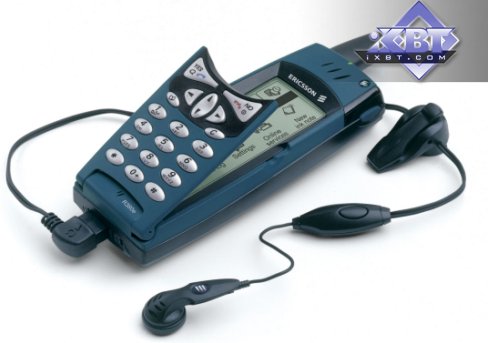
The R380e acquired more functions and is more efficient: it has a 25% larger battery (in capacity). It means that time in stand-by and talk modes is also more. Operation with SIM cards is advanced; WAP 1.2.1 browser and WTLS Class 2 encryption are supported. The R380e has wider possibilities in making it user-friendly, for example, specific icons for WAP and e-mail, animation etc. The phone can be connected to a computer via a USB for updating software and downloading games. The case is now Denim Blue. The phone will be available at the end of October.
The GPRS model R600 from Ericsson is really unequaled. It will appear on the shelves at the end of 2001/beginning of 2002.
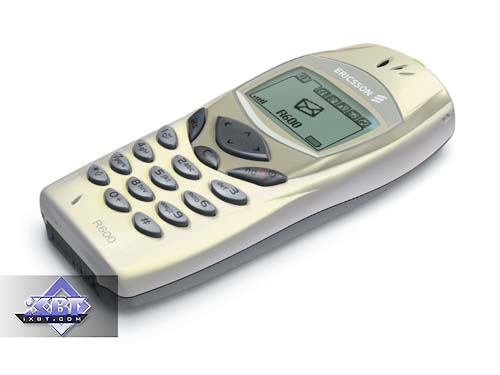
The R600 measures 105 x 45 x 20 mm and weighs 82 g. The talk time is approximately 2-4 hours while in the stand-by mode you can use it up 90-150 hours. The model will be either Ice Blue or Luminous Champagne. The R600 supports EMS, chat mode, predicative input and standard functions such as a calendar, 4 games (Erix, Catcher, Pathy and Ripple) etc.
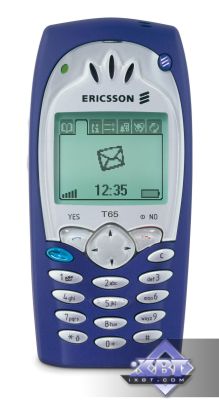
In September Ericsson announced the GPRS model T65, which will appear in Europe by the end of the year.
This model is primarily meant for the youth market. The phone allows receiving data at the maximum of 43.2 KBytes/s on the GPRS network. Unlike the Ericsson R380, the T65 doesn't look so smart. The T65 is equipped with a 6-line display which provides a comfort e-mail management and Internet surfing. The phone supports an extended message exchange service (including animated images, sound, chat). The phone will be either cosmic blue, polar blue or stardust yellow.
The Ericsson T66 is a miniature triband GSM900/1800/1900 phone. The case will be either Silver Supreme or Purple Passion. The model will appear in Q4 2001.
The T66 weighs only 59 g, is equipped with a built-in antenna, supports Enhanced Messaging Service (EMS) technology, a chat mode, WAP, WTLS encryption system and a traditional features such as a calendar, games etc.
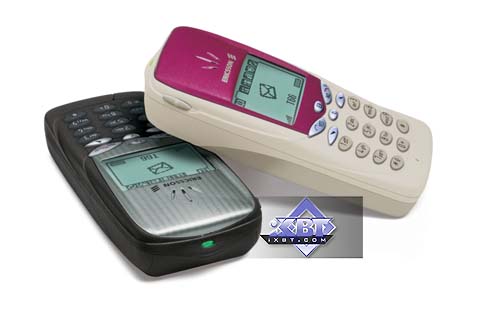
The next two new devices are WAP models of the T60 phones.
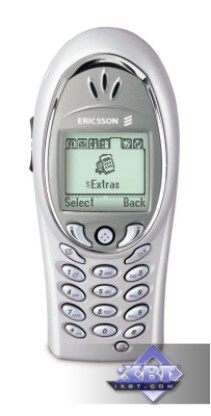
The T60d (on the photo) for TDMA network and the T60c for the CDMA network are expected in the USA in Q4 2001. The T60c supports data exchange up to 153 KBytes/s through 1xRTT, Enhanced Messaging Services, SmartBack accessories and is the first three-mode CDM phone from this company. The phones have an hierarchical phone-book for 500 entries, a caledar-organizer and PIM synchronization (personal information management). Both models weigh only 125 g, and have a 5-color, 7-line display. The T60d has a built-in antenna, while the T60c has a retractable one. Both phones support WAP browser (WAP 1.2.1 of the T60d and WAP 1.1 of the T60c), POP3 (mobile e-mail), tones loading, voice mail, call identification, vibra call and can connect different external devices such as Ericsson Portable Handsfree with an FM-receiver and MP3 player or Bluetooth devices from Ericsson. A built-in Li battery provides 2.5 hours for the talk mode and 230 hours for the stand-by one.

As you can see Ericsson has announced a great deal of new models, but I think that the terms of putting into production of some models will be put off as the company won't be able to promote such a variety of products simultaneously. Anyway, all models will be marked with a logo of the new company. At http://www.sonyericssonmobile.com is its new site.
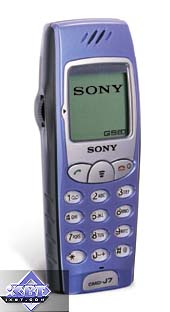
Sony has also launched several new models. Sony CMD-J7 and CMD-J70 extend the J line which earlier included only two phones - CMD-J5 and CMD-J6.
The 7X models are different in color, and the senior one has an EFR codec support. In all other respects, these are usual mid-level phones with an internal antenna and traditional JogDial.
Another model Sony CMD-Z7 is a follower of the Sony CMD-Z5. Among its peculiarities are an internal antenna and Advanced Jog Dial 5D - a menu navigation system with extended functions as compared with the Jog Dial in the CMD-Z5.
Now comes Benefon. The company has licensed the E.L.V.I.S. technology (Embedded Large Vocabulary Interface System) from Voice Signal and will integrate it into new GSM phones in Q2 2002. There is no information what models will get it, but it is known that the Voice Signal can work only on low-powered processors. According to Tommi Lehtonen, Technical Director, they chose the Voice Signal technology due to its high quality of speech recognition and a compact program code. It is possible that in a year all Benefon's phones will support a voice dialing and a voice menu navigation.
Siemens introduced Siemens C45 which is a follower of the C35i. The handset will be either Oriental Blue or African Grey, but there is also a set of 8 replaceable front and rear CLIPit Covers (Dry Savanna, Hot Magma, Techno Ocean, Fresh Lemon etc.).
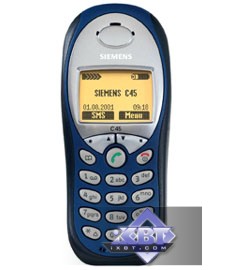

The C45 weighs 107 g and measures 82 cubic cm. In the stand-by mode it can work up to 200 hours and up to 300 min in the talk mode. Besides, it has such functions as Intelligent Typing (T9), loading of additional tones, images and screensavers, group SMS delivery, EMS (Enhanced Messaging Service) support, a calendar, BattleMail games etc.

In October the updated version of the M35 will start shipping. The case is now dark-blue and the backlight is of amber color (like in the Siemens SL45 ). The new model will cost as much as the usual M35 in a dark-blue case.
Motorola has launched a new phone i55sr from the iDEN series which meets the military standards as far as shock-proof support and vibration are concerned. Besides, it is water-proof. The J2ME platform allows creating almost any application which could manage the processor.
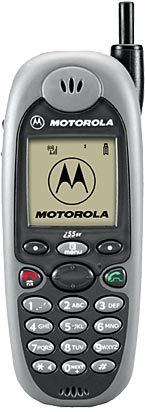
The phone offers a speakerphone mode, a dictaphone, a radio transmitter mode etc. The i55sr can work up to 5 days in a stand-by mode and 4.5 hours in a talk mode.
The model is meant, however, only for CDMA and TDMA networks of the USA and Canada. The recommended price hovers around $127 - $227. It looks like the GSM version is not going to appear at all.
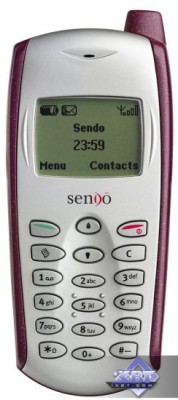
Sendo is preparing its new two-band GSM-900/1800 business class model Sendo J520 .
The Sendo J520 weighs 75 g and measures 114 x 50 x 25 mm. The phone has a 6-line LCD display with 96 X 64 pixels resolution, WAP 1.2 browser, SMS support, predicative text input, an organizer, a set of tones which can be renewed and a vibra call. Besides, you can mount front and rear covers to your liking. The power is enough to feed the phone up to 3 hours in the talk mode and up to 180 hours in the stand-by one. The model will be priced somewhere about $240 and will appear by the end of the year.
Another interesting model from this company is a two-band GSM-900/GSM-1800 phone Sendo P200 which weighs 98 g. It is equipped with a graphics 96 x 64 screen which can display up to 6 lines of text and supports predicative input. The battery will let you use the phone up to 2.5-3.5 hours in the talk mode and up to 170-360 hours in the stand-by one. Apart from standard messages the SMS allows sending 54 unique smiles (Philips format). Among other functions are a clock, an alarm-clock, a vibra call, 4 games (FlippIT, Scizzors, Splash, Quaddro) and WAP. The phone will be available in the beginning of the next year.
A new stylish miniature model from Panasonic - GD75 - measures 105 x 45 x 22 mm and weighs only 88 g. The phone has a 6-line graphics display and a 5-position joystick for a comfortable surfing the Internet. The GD 75 has the Wap 1.2 browser, can send/receive e-mail, supports SMS (chat, graphics mode), 24 preinstalled ringing tones with a possibility to create or download new melodies; there is also a digital dictaphone and a voice dialing. The battery suffices for 190 hours in a stand-by mode and 5 hours in the talk one. The Panasonic GD 75 will be available by the year end.
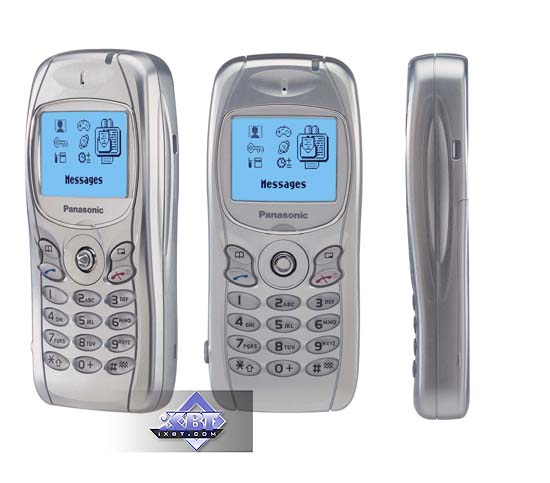
The new model from Sagem, MW3026, is just an analog of the old MW3020. It has become very popular to release models which are different from the previous ones only in design, since it doesn't require expenses for development and raises sales volumes.
The MW 3026 has a 8-line display with a blue backlight, animated 3D icons, and Wap 1.1 browser. The handset measures 105 x 50 x 23 mm and weighs 112 g (like the MW 3020). You can also download new tones, store up to 10 SMS messages, use voice dialing and an IrDA port and record up to 50 entries in the phone-book. The phone works up to 3 hours in the talk mode and 185 hours in the stand-by one.
Alcatel announced its Alcatel OneTouch 311. This phone looks like the 511 model and belongs to the entry-level market which means the price around $120.
Trium launched three models: Trium Aura, Odyssey and Mistra. The phones differ only in design. They have GPRS class 4, WAP 1.1 browser and traditional set of functions.

At the World PC Expo 2001 Sanyo Electric displayed a prototype of a mobile phone with an organic electroluminescence display (OLED) which provides viewing of video and animated images in a full-color mode.
The model belongs to the 3d generation and will appear only next year. A 2.2" OLED, 176 x 220, can display 260,000 colors. Besides, the phone is equipped with a built-in camera (in the upper right corner).
Some FOMA's phones use such displays. At http://nooper.co.jp/showcase/ you can look at some FOMA models (Panasonic p2101v and NEC2001). Below you can see the Panasonic p2101v. Foma phones are reviewed at http://www.renfield.net .
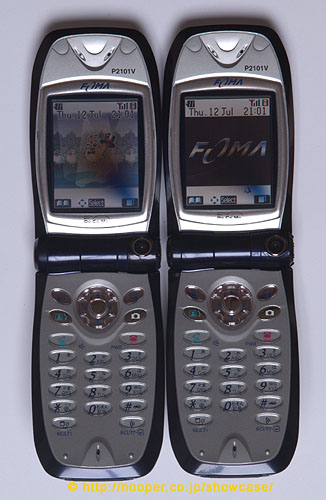
Here you can also look at the slot machines selling water which can be paid for with the help of mobile phones. There are also three reports from the CEATEC2001 display.
Now I turn directly to new technologies. Thus, Agere announced its new solution for GSM/GPRS phones which can increase 4 times a data exchange rate on GPRS networks.
The SVL12 platform will twice reduce consumption of discrete electronic components. The new platform provides GPRS Class 12. The phone makers will be able to reduce the development and production cycle to 6 months with the means supplied with the chipset. The platform is based on the Spectre 3 chipset which consists of a wide-band processor with a DSP16000 core with ARM7 TDMI microcontroller, PSC2011 power management chip and CSP1093C signal mixing chip. The SVL12 will ensure up to 200 hours in the stand-by mode and 200 minutes in the talk mode (the battery capacity is, however, not specified). The SVL12 samples are already available.
Global Communications Semiconductor declared that its new InGaP HBT (bipolar heterotransistor) process has successfully passed all tests and the company is now ready to start production of new highly reliable power and control components such as amplifiers for cellular phones, voltage amplifiers for 10 Gbit/s networks and laser managing chips. The activation voltage is 1.2 EV, error-free running time is 10 million hours at 125 C. Now the company offers its services in production on InP, InGaP and PHEMT processes.
Qualcomm started shipment of cheap chips to 40 phone makers. These chips do not have the most of high-tech features such as MP3 players ot cameras. Instead, the company has concentrated on basic functions - voice calls and SMS messaging.
According to analysts, the new Qualcomm chips signify
that middle-level phones abandon the market. It is those phones
which are able not only to make a call, but also have less features
as their $500 brothers. Phones which such chips will obviously reduce
income of operators who count on a user to download audio/video
and games at his own expense.
Write a comment below. No registration needed!
|
Article navigation: |
| blog comments powered by Disqus |
| Most Popular Reviews | More RSS |
 |
Comparing old, cheap solutions from AMD with new, budget offerings from Intel.
February 1, 2013 · Processor Roundups |
 |
Inno3D GeForce GTX 670 iChill, Inno3D GeForce GTX 660 Ti Graphics Cards A couple of mid-range adapters with original cooling systems.
January 30, 2013 · Video cards: NVIDIA GPUs |
 |
Creative Sound Blaster X-Fi Surround 5.1 An external X-Fi solution in tests.
September 9, 2008 · Sound Cards |
 |
The first worthwhile Piledriver CPU.
September 11, 2012 · Processors: AMD |
 |
Consumed Power, Energy Consumption: Ivy Bridge vs. Sandy Bridge Trying out the new method.
September 18, 2012 · Processors: Intel |
| Latest Reviews | More RSS |
 |
Retested all graphics cards with the new drivers.
Oct 18, 2013 · 3Digests
|
 |
Added new benchmarks: BioShock Infinite and Metro: Last Light.
Sep 06, 2013 · 3Digests
|
 |
Added the test results of NVIDIA GeForce GTX 760 and AMD Radeon HD 7730.
Aug 05, 2013 · 3Digests
|
 |
Gainward GeForce GTX 650 Ti BOOST 2GB Golden Sample Graphics Card An excellent hybrid of GeForce GTX 650 Ti and GeForce GTX 660.
Jun 24, 2013 · Video cards: NVIDIA GPUs
|
 |
Added the test results of NVIDIA GeForce GTX 770/780.
Jun 03, 2013 · 3Digests
|
| Latest News | More RSS |
Platform · Video · Multimedia · Mobile · Other || About us & Privacy policy · Twitter · Facebook
Copyright © Byrds Research & Publishing, Ltd., 1997–2011. All rights reserved.